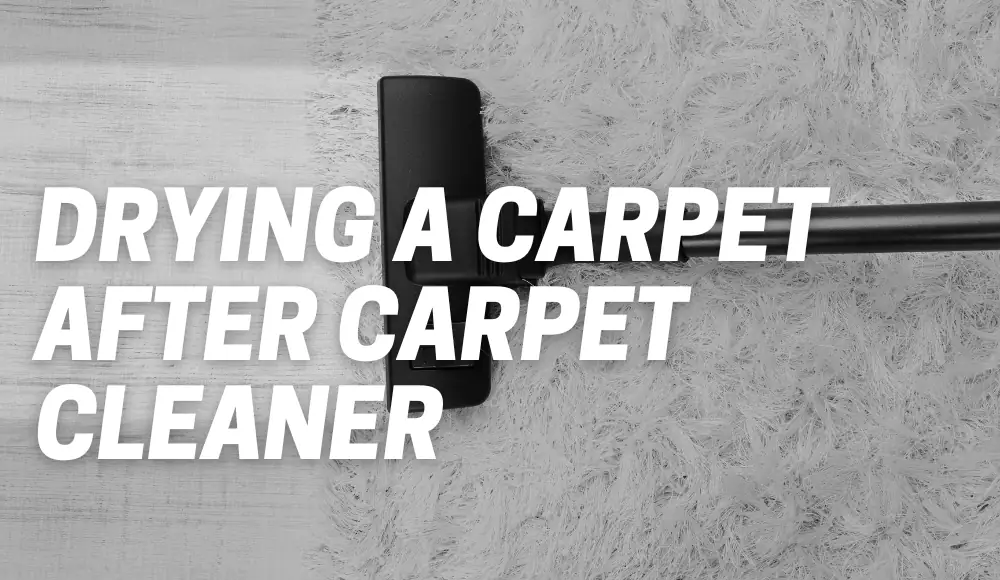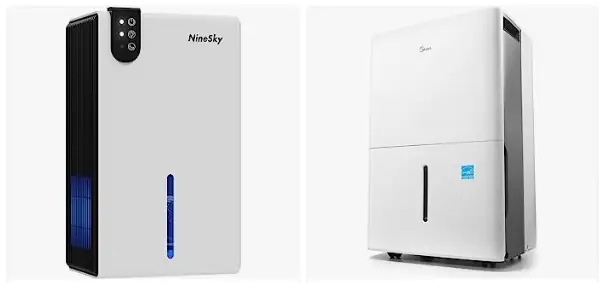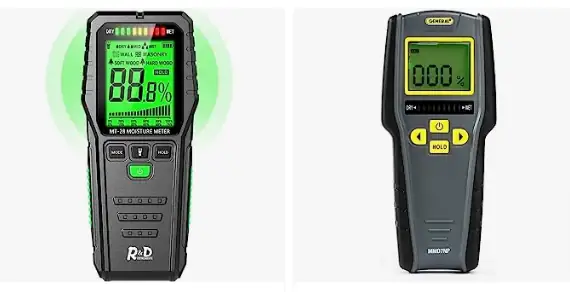Cleaning your carpet is an essential part of maintaining a clean and healthy home. Whether you’ve recently spilled a glass of wine or you’re tackling years of built-up dirt, using a carpet cleaner can work wonders in restoring the freshness of your carpets. However, once you’ve deep-cleaned your carpets, you may be wondering how to ensure they dry properly.
In this article, we’ll explore the process of carpet drying after using a carpet cleaner, the factors that affect drying time, and some tips to help you achieve optimal results.
Importance of Proper Carpet Drying
Proper carpet drying is essential for several reasons.
First and foremost, it helps prevent the growth of mold and mildew. Excess moisture in the carpet can create a conducive environment for mold and mildew spores to thrive, leading to unpleasant odors and potential health issues.
By ensuring thorough drying, you can minimize the risk of mold and maintain a healthy indoor environment.
Additionally, proper drying helps maintain the integrity of the carpet fibers. Prolonged exposure to moisture can cause the fibers to become weak, leading to damage, discoloration, or even the development of permanent stains.
By allowing your carpet to dry completely, you can preserve its appearance and extend its lifespan.
How Long Does Carpet Take to Dry After Cleaning?
The drying time of a carpet largely depends on various factors, including the cleaning method used, humidity levels, airflow, and the type of carpet fiber.
On average, carpets can take anywhere from 6 to 24 hours to dry completely after cleaning. However, it’s important to note that this is just an estimate, and the actual drying time may vary.
How Long Does Carpet Take to Dry After Shampooing?
Shampooing your carpet involves using a specialized carpet shampoo and a carpet cleaner machine.
This method can leave your carpets thoroughly cleaned, but it may also require more time for drying compared to other cleaning methods.
After shampooing, you can expect your carpet to take anywhere from 12 to 24 hours to dry completely.
Why Is My Carpet Not Drying After Cleaning?
If you find that your carpet is not drying properly after cleaning, there could be a few reasons behind it.
Here are some common factors that can contribute to slow drying:
- Excessive moisture: Using too much water or cleaning solution during the cleaning process can saturate the carpet fibers, making it harder for them to dry.
- Poor airflow: Insufficient air circulation in the room can impede the evaporation of moisture from the carpet. Ensure windows are open or use fans to promote airflow.
- High humidity: High humidity levels in the environment can slow down the evaporation process, prolonging the drying time of your carpet.
- Thick carpet pile: Carpets with a thick pile tend to retain more moisture, making them take longer to dry.
If you’re experiencing slow drying, it’s essential to address these factors to prevent mold or mildew growth and to achieve the best results.
Can I Let My Carpet Air Dry After Cleaning?
Air drying your carpet is a viable option after using a carpet cleaner.
It can be particularly effective during warmer months when humidity levels are low and there is good airflow in your home. However, it’s crucial to note that air drying alone may take a significant amount of time, especially if the carpet is heavily saturated.
To speed up the drying process, you can combine air drying with other techniques.
How Do You Dry a Carpet After Using a Carpet Cleaner?
To ensure your carpet dries thoroughly and efficiently after using a carpet cleaner, here are some practical steps you can follow:
Carpet cleaning and drying
- Extract excess moisture: After cleaning, use the extraction feature on your carpet cleaner to remove as much water and cleaning solution as possible. This step helps prevent over-saturation and reduces the overall drying time.
- Increase airflow: Open windows and doors to improve air circulation in the room. You can also position fans strategically to facilitate faster drying. Pointing fans towards the carpet and running ceiling fans can help expedite the process.
- Use dehumidifiers: If you live in a humid environment, consider using dehumidifiers to remove excess moisture from the air. Lowering the humidity levels can significantly aid in drying your carpet.
- Blot excess moisture: If you notice any damp areas or water pooling on the carpet, use clean towels or absorbent cloths to blot the excess moisture. Press firmly to soak up as much liquid as possible.
- Lift furniture: If possible, elevate furniture legs using small blocks or aluminum foil to prevent them from absorbing moisture from the carpet. This step allows air to circulate beneath the furniture, aiding in drying.
- Avoid walking on the carpet: Minimize foot traffic on the damp carpet to prevent additional moisture from being introduced. Walking on a wet carpet can also lead to stains or damage to the fibers.
Dehumidifiers for drying wet carpet
How to Dry Carpet After Cleaning in Winter
Drying carpets during winter can be challenging due to the cold and damp conditions.
However, with some adjustments and precautions, you can still achieve effective drying. Here are a few tips to dry your carpet after cleaning during the winter season:
- Adjust the thermostat: Set your indoor temperature to a comfortable level, around 70°F (21°C), to help promote evaporation.
- Use heaters: If your heating system allows, use portable heaters or radiator covers to direct warm air toward the carpeted area. Be cautious with space heaters and ensure they are positioned safely to prevent any fire hazards.
- Keep windows cracked open: While it may seem counterintuitive, slightly opening windows for a short period can exchange moisture-laden indoor air with drier outdoor air. This exchange can aid in drying your carpet faster.
- Utilize dehumidifiers: Run dehumidifiers to reduce excess moisture in the air. They can help maintain a suitable humidity level for efficient drying.
- Follow the steps mentioned earlier: Implement the tips mentioned earlier, such as blotting excess moisture and increasing airflow, to expedite the drying process even in winter.
Remember, patience is key when drying carpets in winter. It may take longer for the moisture to evaporate due to the colder conditions, but with proper techniques, you can still achieve satisfactory results.
Useful Information: Tips for Efficient Carpet Drying
Here are some additional tips to help you achieve efficient carpet drying:
- Time your cleaning: Plan your carpet cleaning session for a time when you can allow sufficient drying time. It’s best to clean the carpets on a warm and sunny day when you can open windows and doors to facilitate airflow.
- Use a moisture meter: A moisture meter can help you determine the moisture content in your carpet. By periodically checking the readings, you can track the progress of drying and ensure that the carpet reaches an acceptable moisture level before considering it fully dry.
- Consider professional carpet cleaning services: If you’re concerned about the drying process or if you have a large carpeted area, you might want to consider hiring professional carpet cleaning services. These experts have specialized equipment and techniques to ensure thorough cleaning and efficient drying.
- Use carpet dryers: Carpet dryers, also known as air movers, can be highly effective in speeding up the drying process. These powerful fans generate a high volume of airflow, promoting faster evaporation of moisture from the carpet. Position the dryers strategically, aiming them at the wet areas for optimal results.
- Opt for low-moisture cleaning methods: Some cleaning methods, such as dry cleaning or encapsulation cleaning, use minimal moisture and can significantly reduce the drying time. These methods are especially useful if you need your carpets to dry quickly or if you’re concerned about moisture-related issues.
- Test the carpet before moving furniture back: Before returning furniture to the cleaned area, ensure that the carpet is completely dry. You can perform a simple moisture test by placing a clean, white cloth or plastic sheet on the carpet and leaving it for a few hours. If there’s no moisture transfer to the cloth or condensation under the plastic, it’s a good indication that the carpet is dry.
- Consider professional water extraction: In cases where your carpet has been heavily saturated, such as after a water leak or flooding, it may be necessary to seek professional water extraction services. These professionals have specialized equipment to remove excess water from the carpet and expedite the drying process.
Moisture meter
Carpet Drying Time Based on Cleaning Methods
Below is a table showcasing estimated carpet drying times based on different cleaning methods:
| Cleaning Method | Drying Time Range |
|---|---|
| Steam Cleaning | 6 – 12 hours |
| Dry Cleaning | 2 – 4 hours |
| Shampooing | 12 – 24 hours |
| Bonnet Cleaning | 4 – 6 hours |
| Encapsulation Cleaning | 4 – 8 hours |
Please note that these drying times are approximate and can vary depending on various factors, as discussed earlier in the article.
Conclusion
Ensuring proper drying after using a carpet cleaner is crucial for maintaining the cleanliness and longevity of your carpets.
By following the steps mentioned above and considering the factors that affect drying time, you can successfully dry your carpets and enjoy fresh, clean flooring. Remember, a little patience and attention to detail go a long way in achieving the best results.





